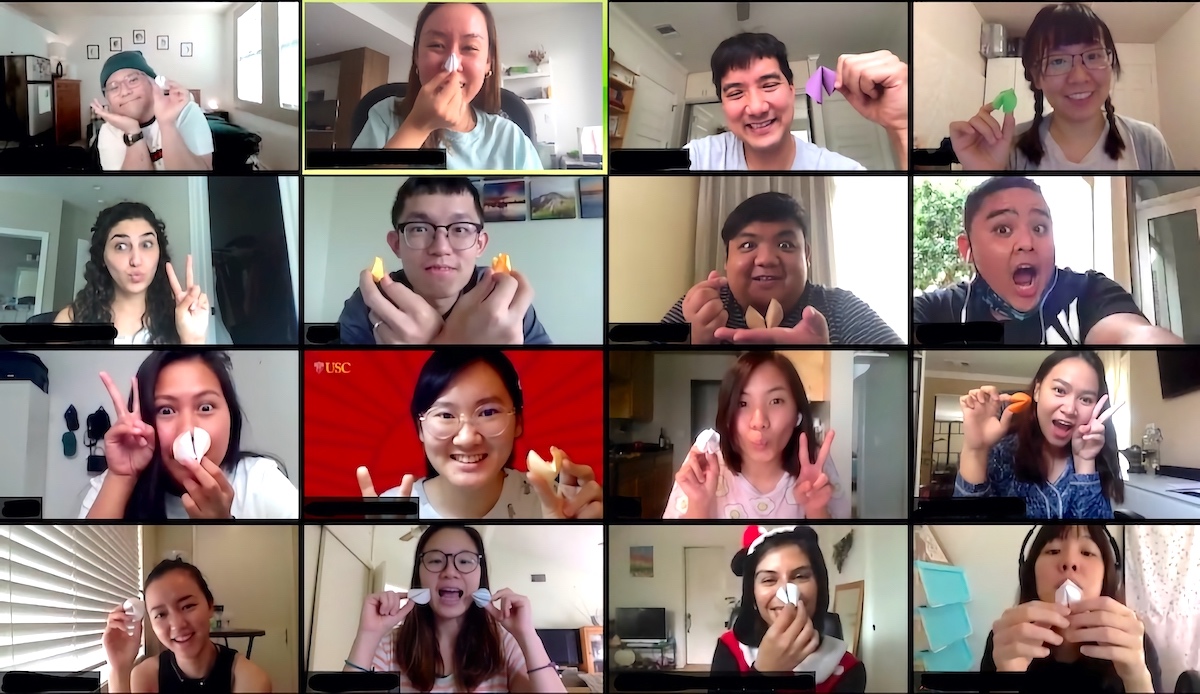Student Blog

Check In with Yourself ⟩
September 25, 2020, by Lamoni
Hi everyone, I simply want to check-in. This semester has been very busy and because the semester is squished into 12 weeks, we are already nearly halfway done. I feel like this week has been a particularly high stress week for individuals. Maybe it is stress about midterms, maybe it is stress because some of the half-semester electives are wrapping up, maybe it is stress about still feeling like you are trying to organize and plan for a semester that is already 42% done (points at self).
When attempting to check-in with my classmates, most of the responses that I receive are nervous chuckles (even in text form. You know the emoji). Honestly, when I check-in with myself, it is the same response. No matter the exact reason that you are stressed, it is valid. Being a graduate student is hard work, being a graduate student during times like this is several times harder. And, unfortunately, the other stressors in our lives continue to exist even while we are students.
I just want to take the time to emphasize that you are not alone in these emotions. Several students are feeling overwhelmed and exhausted. But I also want to emphasize that just because several people are experiencing it does not mean that it is healthy. While being a student, there is always some level of stress. However, it should not be debilitating.
It is important to cut out some time to check in with yourself.
- Take note of your current mood. What exactly is contributing to your stress? Not just “schoolwork” but what are the assignments? Create an organized action plan of how and at what time you will tackle each assignment. Organization requires some heavy lifting in the beginning but once you have found a schedule and planning routine that works for you, it helps a ton.
- What are some outside stressors that you can control? Are there some things that you are a part of but can cut back on?
- Now think about the last time you did something truly enjoyable. How long ago was that? How can you recreate that feeling sometime soon?
- Also think about the last time you engaged in self-care. What did you do and how long ago was that?
It may help to give yourself a visual by writing all of this out. If there is a large imbalance between stressors and enjoyable activities or coping strategies, you will eventually burn yourself out. Now is the time to create healthy habits and routines. Life, in general, comes with stress. Practicing healthy ways to handle it now will greatly benefit us in the future. You are a student, but you are a person first. Prioritize taking care of your mind and body. We only get one of each and it has to last.
⋯
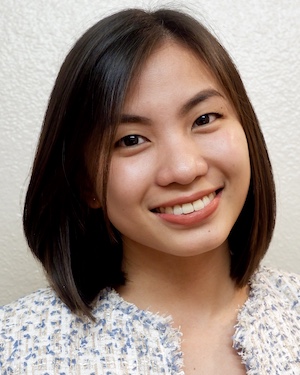
Staying connected ⟩
September 23, 2020, by Yna
As an only child, I spend a lot of time hanging out with my friends, probably topping my list of favorite occupations. Although over the years I’ve appreciated being able to have my own private time, I also find a different kind of delightful companionship from them. And so without being able to go out due to the stay at home protocol currently in place, and adding the factor of being away from home, feelings of loneliness do arise from time to time. What definitely has been a huge support for my situation are the various (virtual) social events being held regularly at school, which I think students could really use especially during this time of limited socialization opportunities.
Global Initiatives, for one, hosted an International Student Welcome Celebration Zoom party, where students were allowed to gather virtually (in our pajamas!) and have time dedicated to just catch up, share experiences, and have fun together.
Members of the Global Initiatives team and some international students showing off their paper fortune cookies as part of the activity “Bake a Wish”
One of our activities was called “Bake a Wish” where we made paper fortune cookies. We picked out a quote from a list of inspirational messages that were provided by the students ourselves, to provide encouragement to our fellow students. My quote of choice says: “The goal is to be better than who you were yesterday,” to inspire me to keep going especially for when the more challenging times come.
Additionally, here is a photo of me with some Post-Professional Master’s students Elmo, Amy, and Ahmed virtually hanging out on a Friday night over Zoom. We played some games and really spent time talking to each other about life and many other things.
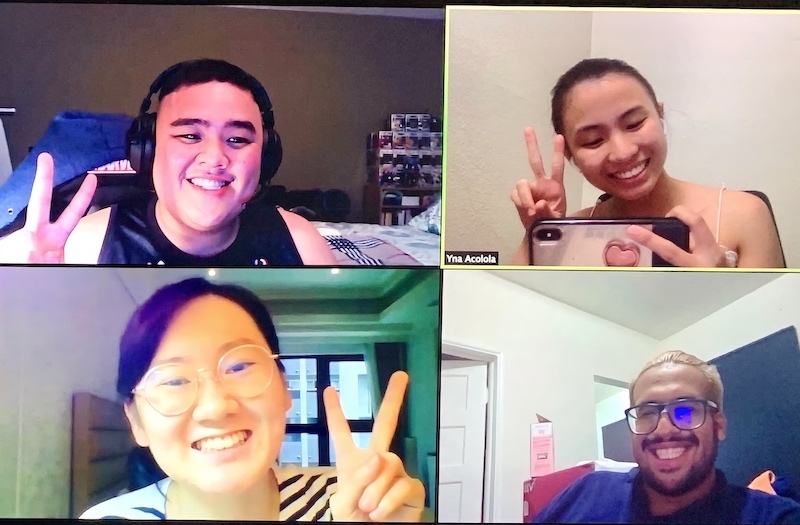
Post-Professional Master’s students Elmo Nicolas, Amy Yeu, and Ahmed Almeshari virtually having a “wine night” over Zoom
Despite the busy schedule, it is nice to have some time dedicated for socialization. Besides, what better way to destress after finishing 3 weeks of the fall semester than celebrate it with my fellow international students? After all, we, humans, are innately social beings; and social participation is one essential area of occupation that we must also fulfill in order to achieve a healthy balance.
To wrap this up, I want to highlight the importance of finding creative ways to make our presence felt to our friends and loved ones even though we’re socially distanced from each other. Each of us carries our own personal challenges, apart from the multitude of things currently happening in our society that may or may not be directly impacting us, so making it this far is really something to be recognized in itself. During challenging and unprecedented times like these, it is through each other where we can find support and draw strength from, so definitely reach out and seek support! Fight on, everyone!
⋯
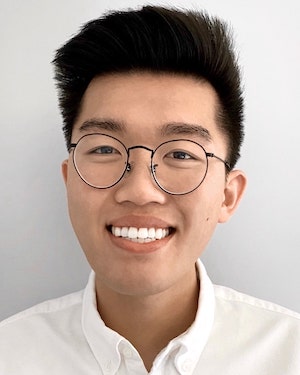
Humans of USC Chan Volume 1 ⟩
September 21, 2020, by Calvin
Classes Diversity Videos What are OS/OT?
When I was applying to OT school, I remember that I really wanted to get different student perspectives on what programs were like and how they navigated graduate school. As a student ambassador, I feel so lucky to have the opportunity to share my experiences with all of you, but I know that there are so many other extraordinary voices in the division too!
So, I gathered some second-year Entry-Level Master’s students to come and talk about what their OT school experiences have been like so far! We went over topics related to what kind of OT they’re interested in, what their favorite classes and memories are, and what challenges they’ve faced. They even shared some advice for all of you thinking about applying to the program! If you watch it through YouTube, the video is time-stamped with each topic in case you ever want to go back to a specific conversation.
I hope you find this video helpful and that these diverse perspectives give you more insight into what student life is like in the Master’s program! Welcome to the Humans of USC Chan!
⋯

My First Level 1 Fieldwork in Permanent Supportive Housing ⟩
September 17, 2020, by Liz
The mental health immersion has been by far one of my favorites! Before grad school I had zero experience in this type of setting and I didn’t know what OT in mental health looked like. So, I was excited to learn all about it! A couple of weeks into my first fall semester, I learned that I would be completing my first level 1 fieldwork experience at a permanent supportive housing facility. The residents at this facility were all individuals who were transitioning from homelessness to permanent housing. This is one of the settings that you’ll get a chance to learn about in the immersion.
To my surprise there wasn’t an OT at my site, but I learned SO much. This was because there’s already a smaller representation of occupational therapists working in mental health settings. Fortunately, there were a couple of case managers and an event coordinator present who collaborated with each other to best support the residents. At first it made me really nervous that there wasn’t an OT at my site. I already didn’t know what OT looked like in a mental health context and the fact that it was my first fieldwork experience felt intimidating. However, I will say it was comforting to have one of my colleagues at the same site with me!
The site was relatively new, and most of the residents didn’t really know each other. However, a few of them did from seeing each other at some of the same shelters prior to obtaining housing. On our first day, we knocked on every single resident’s door to introduce ourselves. Even after we introduced ourselves, at first it was difficult for my colleague and I to interact with a lot of the residents. They preferred to stay in their rooms and only came down to the main lobby for coffee or snacks. So, my colleague and I asked ourselves: what would our goal be while we were there? We broke down some of what we had learned in class so far and decided that we wanted to establish a sense of community among the residents. We hoped to promote social engagement and wanted the site to feel like home. And of course we also wanted to encourage the residents to engage in meaningful occupations!
We discussed our ideas with the case managers and event coordinator to make sure it was okay to move forward and they were on board! After receiving the green light, we designed a monthly calendar full of different groups/activities the residents could attend which included gardening, bingo, cooking groups, exercise groups, and computer classes. We also got to use some of the money available in the budget to order some yoga mats, light weights, coloring supplies, and raffle gift cards for bingo.
Every week we would make a new flyer to promote the groups we would be hosting for the day, knock on people’s doors, and invite them to join us. What started with one person attending our first couple of groups turned into more than 10 people joining us! I had the chance to work with one resident who wanted to learn how to use a computer to type up his own songs. He loved music, and I showed him how to use Microsoft Word to type them up. I taught him how to use the internet to search up websites that help you practice typing on the keyboard. I also helped another resident type up a resume. She wanted to go back to work and wanted to get a resume ready. Being able to support these residents engage in activities they found meaningful was amazing.
Over time, some residents felt more comfortable coming down to the lobby even during hours when we weren’t hosting any group sessions. It was an amazing experience also serving as social support for them. Several residents didn’t have any family or friends, while some had simply lost touch with them. On some days we would just sit in the lobby, listen to music and just talk. We were able to order a speaker for bingo that had an aux, so I was able to take some song requests. Billie Jean was a HIT! But, hearing their stories was the best part.
My professional boundaries were also tested while I was at this site. I am a very petite woman, and one of the residents who was also around my size wanted to give me a USC sweater she said no longer fit her. We had talked about this in class and how we may have to make ethical decisions when at fieldwork and in practice. But, I didn’t know making those decisions would come so soon! This woman whom I had established wonderful rapport with wanted to gift me a sweater. How could I decline? I definitely didn’t want her to think it was because I didn’t like it or because it wasn’t brand new. Would this affect our therapeutic relationship? I knew the right thing to do was to decline the gift. So, I explained that I was not allowed to accept any gifts, but that I would take a picture with it and keep that instead. I could tell she was disappointed at first, but she was happy to see that I took a picture with it! This was definitely a difficult decision to make, but an important part of my learning experience.
Overall, I had a great time and learned a lot! As I am writing this blog post I can’t help but think about all of the wonderful residents I met at this site. I am hoping they are all doing well and full of health! If you are a student in the program who hasn’t taken the mental health immersion, I am certain you’ll have a wonderful experience too. And, if you’re a future Trojan you also have some exciting experiences to look forward to!
⋯
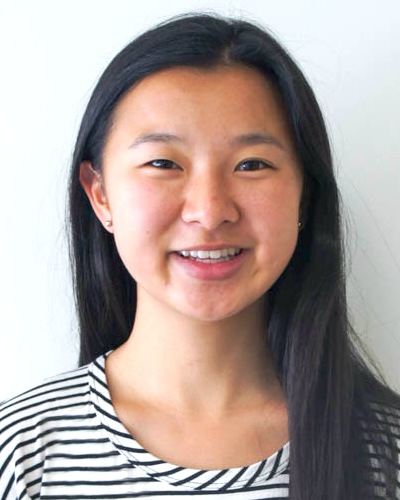
Introducing OT ⟩
September 16, 2020, by Bethany
Between our summer session ending and the start of fall, we had a one week break. And I tried to make the most of the time. I engaged in some of my favorite activities that had been pushed off during finals week, including different musical occupations. One of the most entertaining is making parodies of songs and rewriting lyrics.
I found myself reflecting on my school experiences as an OT. Ever since freshman year, I’ve had to have a definition of my major at hand. That basic introduction question of “What are you studying?” probably brought more explanation than that poor engineering student was expecting. But I thought it would be fun to put it all in song form. I hope you find this parody of Nick Jonas’ “Introducing Me” both informative and amusing. So whether you’re here for the laughs or you’ve stumbled onto this page by accident and want to learn more about OT, here it is, for your perusing.
⋯






